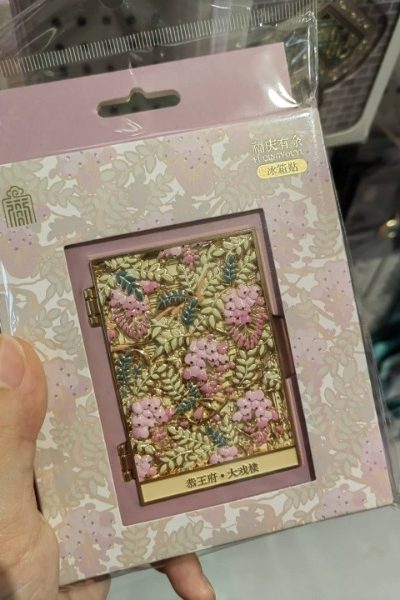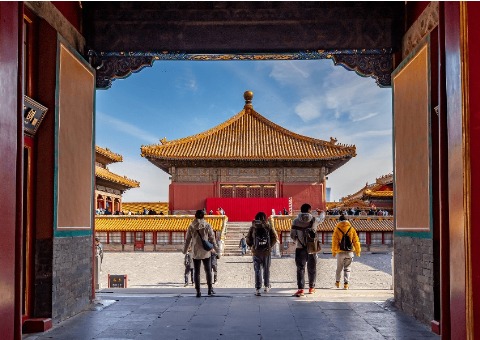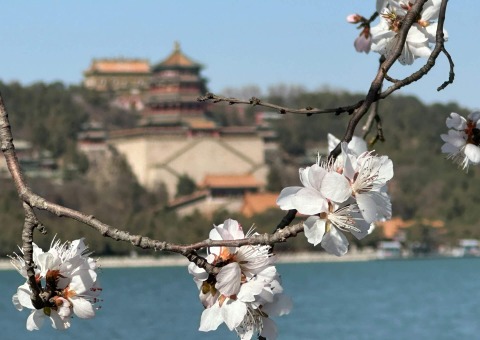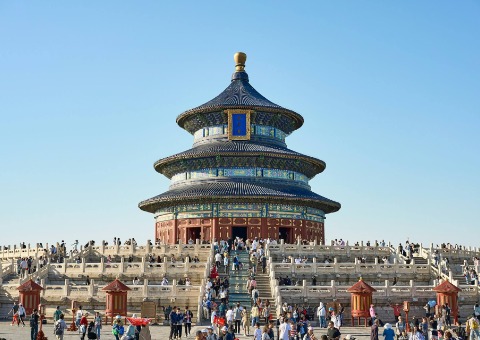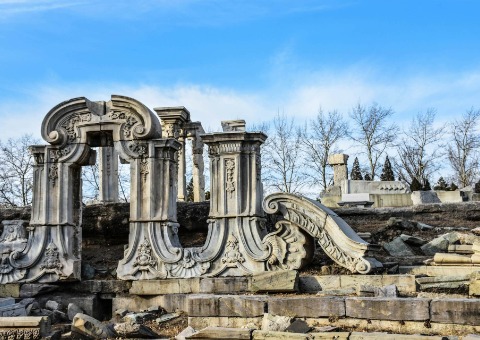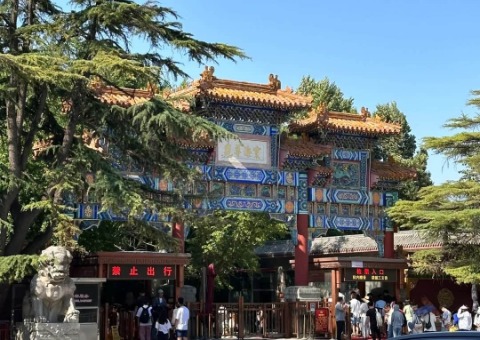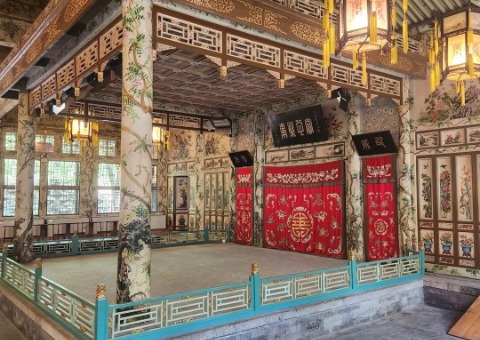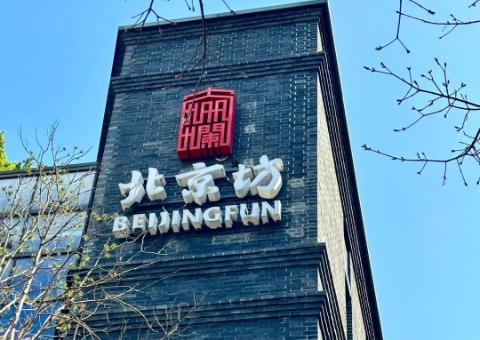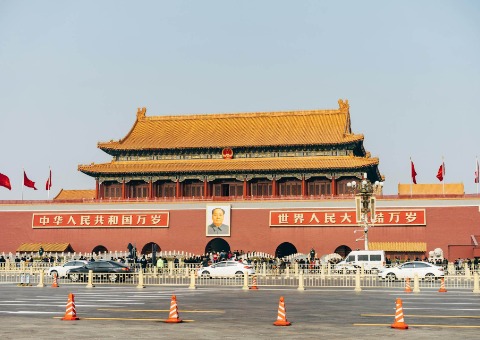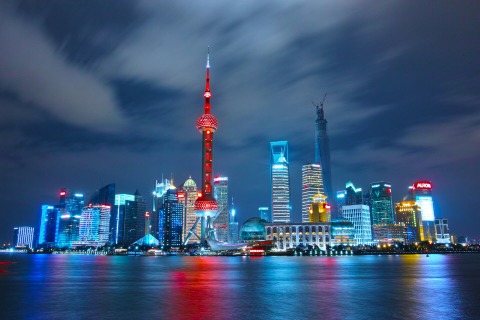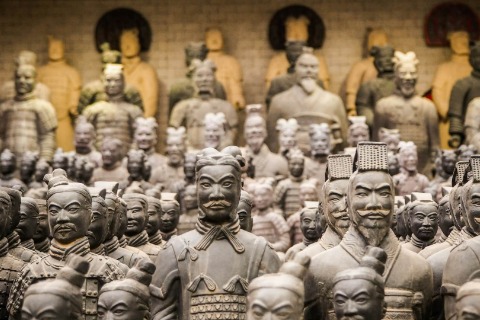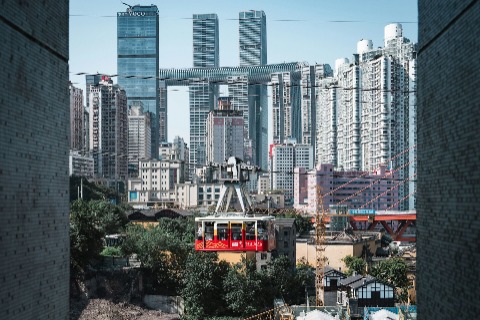Prince Kung's Palace Museum
Beijing’s best-preserved Qing Dynasty prince’s mansion
Prince Kung’s Palace Museum, also known as Prince Gong’s Mansion, is the most well-preserved and largest Qing Dynasty royal residence still standing in China. The land is valued at at least $4.2 billion, and even a single column in the building could be worth $360 million. If you want to gain insight into the lives of China’s imperial aristocracy during the Qing Dynasty, you can’t miss Prince Gong’s Mansion. It’s renowned not only for its grand architecture, exquisite decorations, and rich cultural significance but also for its close ties to Qing Dynasty history, making it a key landmark that witnesses the rise and fall of the Qing Dynasty.
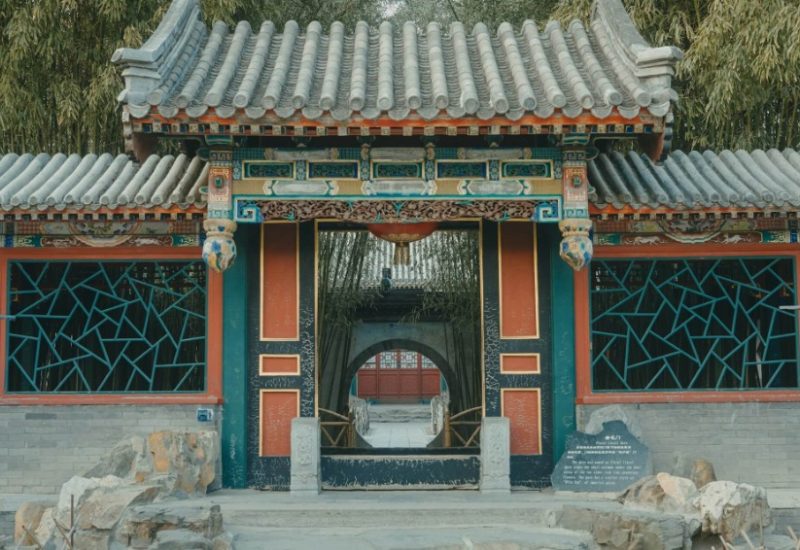
As soon as I stepped into Prince Kung's Palace Museum, I felt the sense of historical atmosphere. The antique-colored buildings, exquisite carvings, every place reveals the luxury and delicacy of Chinese royalty. The garden is skillfully laid out with rockeries, flowing water and pavilions. Walking inside is like strolling through a huge private garden, so beautiful that it makes one's mind wander. Especially the big theater, I heard that is when the Chinese princes are here to listen to the opera. Although there are a little too many tourists, but the good thing is that the place is large, do not feel too crowded. Next time I have the opportunity, I would like to come back to take more pictures and listen to more stories.
Tourist Diary 1
Table of Contents
Highlights
Yin’an Hall (Chinese name: 银安殿)
Yin’an Hall, the main hall of Prince Kung’s Mansion, reflects the esteemed status of the ancient royal family through its design and architecture. While the emperor’s palace featured golden yellow glazed tiles, Yin’an Hall is adorned with green glazed tiles, symbolizing that although the prince’s status was below the emperor’s, it was still highly esteemed. This design choice highlights the hierarchical structure of ancient China.
Inside, there used to be a throne for the prince, and important items such as imperial decrees, promotion orders, and official seals were stored in brocade boxes within the hall. When there was an imperial edict, the mansion’s owner would don official robes and lead everyone in kneeling before Yin’an Hall to receive the edict.
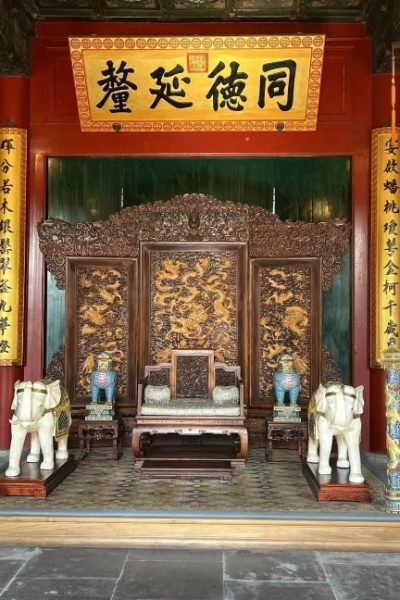
Baoguang Room (葆光室)
Baoguang Room was originally the drawing room of He Shen and Prince Yonglin. Later, during Prince Gong’s time, it was converted into a private salon for receiving close family members of the prince. Today, Baoguang Room serves as an exhibition hall displaying artifacts from Prince Kung’s Mansion.
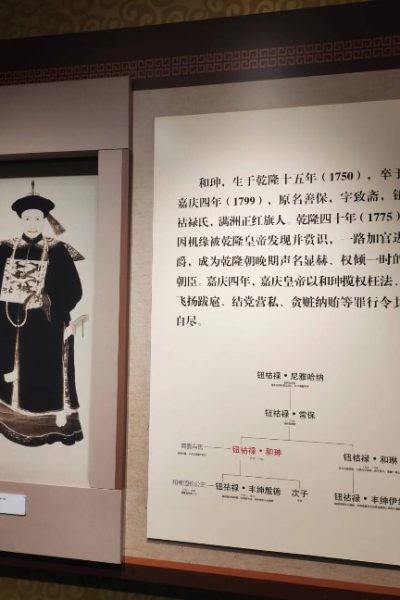
Hou Zhao Building (后罩楼)
Hou Zhao Building consists of a row of 111 rooms stretching over 180 meters, making it the longest building of its kind in Chinese royal residences. This structure not only showcases the exquisite craftsmanship of Qing Dynasty architecture but also embodies a rich cultural heritage.
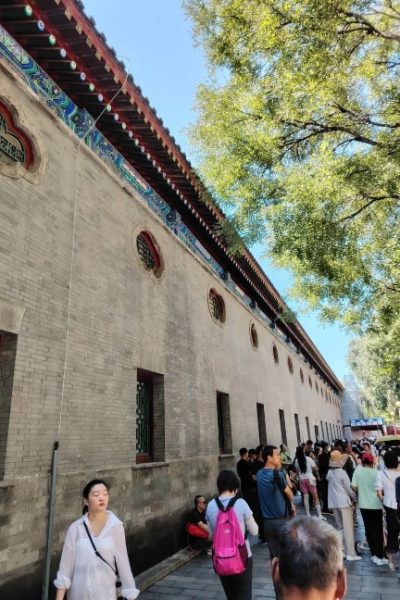
Xiyang Gate (西洋门)
Xiyang Gate is a white marble arch built in a Western style and is the only surviving Qing Dynasty Western-style gate in Beijing. Its design was inspired by the Dashuifa Site in the Yuanmingyuan (Old Summer Palace) and features an arching Western architectural style. As the only Western-style structure in the garden, Xiyang Gate reflects the owner’s desire to revitalize the Qing Dynasty through the adoption of Western culture and technology.
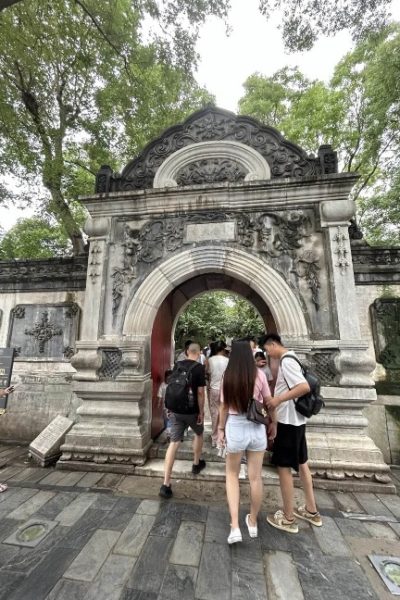
The Palace of King Gong is very grand and beautiful. Red walls, green tiles, doors and windows carved with many exquisite patterns and symbolize good luck "Fu(福)" character. The lecturer said that there are 10,000 different kinds of "Fu" characters in the whole garden. Chinese people really love the word "Fu".
Tourist Diary 2
Da Xi Lou (Grand Theatre) (大戏楼)
Da Xi Lou, built during the Tongzhi era (1862-1874), was specifically designed for Prince Gong and his family and friends to enjoy theatrical performances. It is the only fully enclosed large theater of its kind still existing in China. The theater is renowned for its exceptional acoustics. To achieve perfect sound quality, the space beneath the stage was hollowed out and several large vats were placed there. This ingenious design enhances resonance and reverberation, allowing the audience to hear the actors’ performances clearly from any seat in the theater without the need for sound amplification.
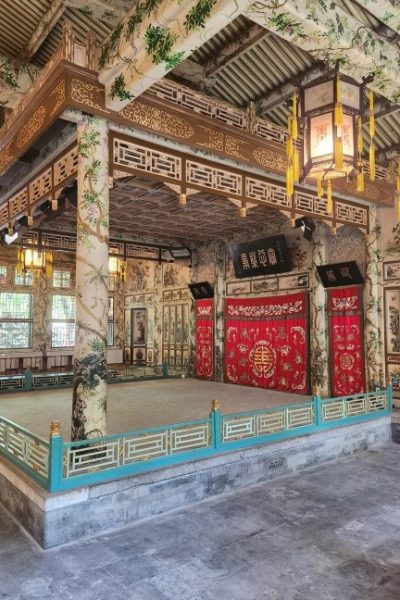
Fortune Stele (福字碑)
The Fortune Stele at Prince Kung’s Mansion is a treasured artifact carved by Emperor Kangxi of the Qing Dynasty, with a history of nearly 400 years. Measuring 7.9 meters in length, it extends through the entire artificial mountain and is a rare example of Kangxi’s large-scale calligraphy. Many visitors come here to touch the stele, hoping it will bring them good fortune.
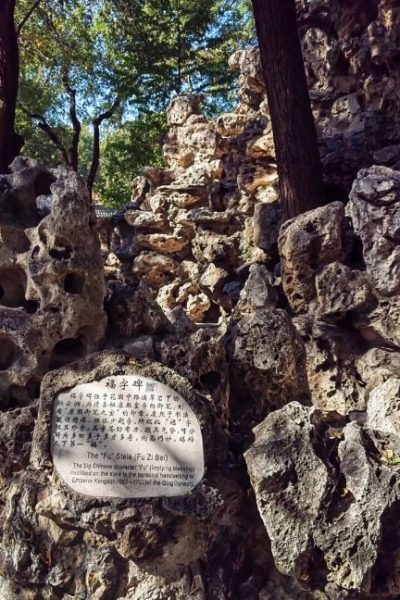
Xi Jin Zhai (锡晋斋)
Xi Jin Zhai was the residence of He Shen and is located within Palace of Prince Gong. It is renowned for its opulence and unique design. The room features eight columns made of golden silk nanmu wood, with each column estimated to be worth 2.7 billion RMB (approximately 370 million USD), highlighting the lavishness of He Shen’s residence. Golden silk nanmu wood, valued for its hardness and resistance to decay, was considered a precious building material in ancient times. The columns in Xi Jin Zhai exemplify the luxurious standards of architecture from that era.
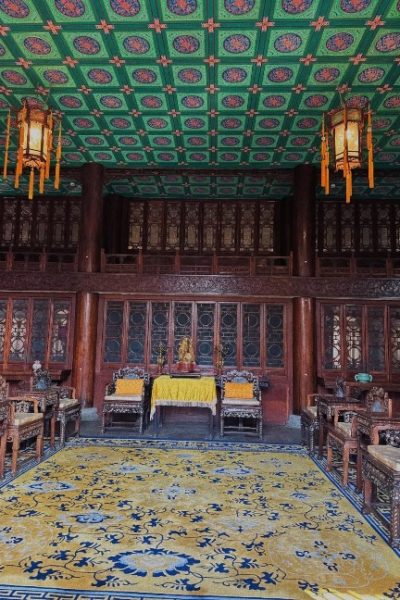
How to Get to the Prince Kung's Palace Museum
By Bus
- Take bus routes 13, 42, 90, 107, 111, or 118 and get off at Beihai North Gate. From there, walk about 300 meters northwest to reach your destination.
By Subway
- Take Subway Line 6: Get off at Beihai North Station, exit from Exit B, and walk about 0.8 km to reach your destination.
- Take Subway Line 8: Get off at Shichahai Station, exit from Exit A2, and walk about 1.2 km to the ticket entrance of Prince Gong’s Mansion.
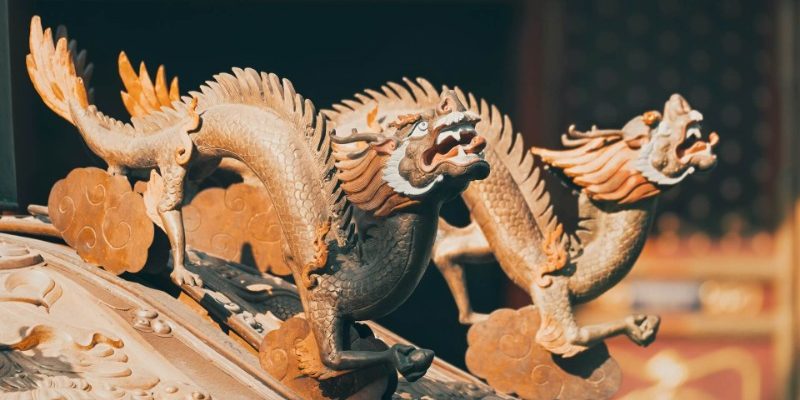
Attraction Information
Hours
- April – October: 08:30 – 17:00
- November – March: 08:30 – 16:00
- Prince Kong’s Mansion is closed every Monday.
Admission
- The ticket price is 40 yuan (approximately $5.60) per person, with the same price for both off-peak and peak seasons.
Prohibited Items
- Due to the wooden structure of Prince Gong’s Mansion, fire safety is particularly important, and flammable and explosive items are prohibited.
- To maintain the cleanliness of the site, food and beverages are also not allowed to be brought into the park.
- Items that may harm cultural relics or disrupt the visiting experience are prohibited, such as clothes drying poles, cat teasing sticks, fishing rods, fishing nets, and selfie sticks longer than 1.3 meters.
Visitor Services
- Visitors can rent an audio guide at the ticket entrance for 30 yuan (approximately $4.20), with no deposit required.
General Amenities
- Medical Room
- Police Room
- Free restrooms
- Visitor Service Center
luggage Storage
- The luggage storage point is located 30 meters from Exit B of Beihai North Subway Station, with operating hours from 08:00 to 21:00.
- Another storage point is located 100 meters from the northeast Exit B of Beihai North Subway Station, operating from 07:00 to 22:00.
- The fee for suitcase storage is 20 yuan (approximately $2.80) per item per day, while for small bags, it is 10 yuan (approximately $1.40) per item per day.
After visiting Heshen's residence, we walked into a white jade arched stone gate. Inside was a very exquisite Chinese garden. Inside the garden were many big old trees, rockery, ponds, and many traditional Chinese pavilions. In the garden there is a ten-meter-high stone, from a distance it looks like a woman holding a child. The lecturer said that this is called "Guanyin", which is a symbol of prosperity.
Tourist Diary 3
Nearby McDonald's/KFC
- KFC (Dianmen Location) 肯德基(地安门店)
No. 178, Di’anmen Outer Street - If you’re unsure about how to order at a nearby Chinese restaurant or if you’re not used to the local Chinese cuisine, you can temporarily solve your dining needs by heading to the nearby KFC.
Nearby Police Station
- Changqiao Police Station厂桥派出所
No. 2, Yibian, Dahongluochang Street, Xicheng District, Beijing - In China, the number to call the police is 110. If you have an emergency and need help, you can dial 110 at any time. Local police will usually arrive within minutes and will provide assistance with great care and responsibility.
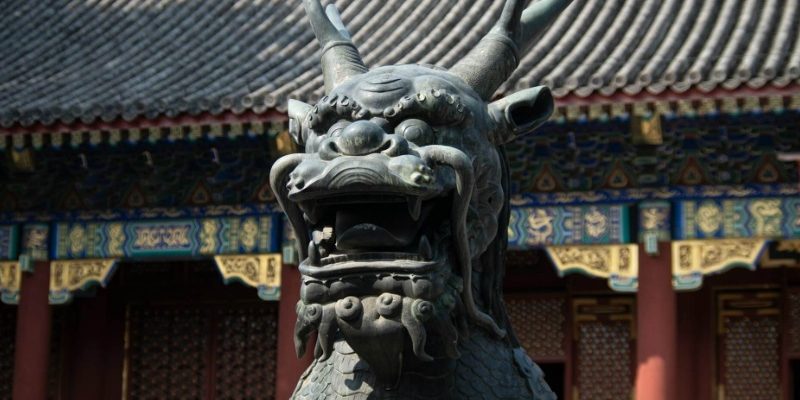
Practical Travel Tips
- It’s not recommended to rent the audio guide, as it lacks noise-canceling features and surrounding noise can drown out the sound; the signal is often unreliable.
- It’s advisable to visit around 3 PM, as tour groups usually arrive at 2 PM, helping you avoid the crowds.
- Spending about 2 hours in the afternoon is ideal, and after that, you can enjoy a boat ride at Shichahai to watch the sunset.
Attraction Surprises
Prince Kung's Mansion Bracelet (恭王府手链)
These bracelets cleverly integrate elements of Prince Gong’s Mansion’s historical culture, traditional festivals, and blessings, showcasing a unique cultural charm. The homophonic meanings on the bracelets also embody people’s longing for and pursuit of a better life.
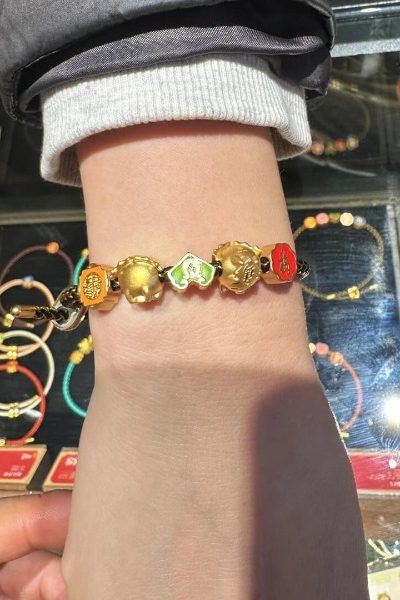
Super cute ice cream (恭王府文创雪糕)
The design of this ice cream is inspired by a historical cultural heritage of Prince Gong’s Mansion, incorporating numerous elements of blessings.
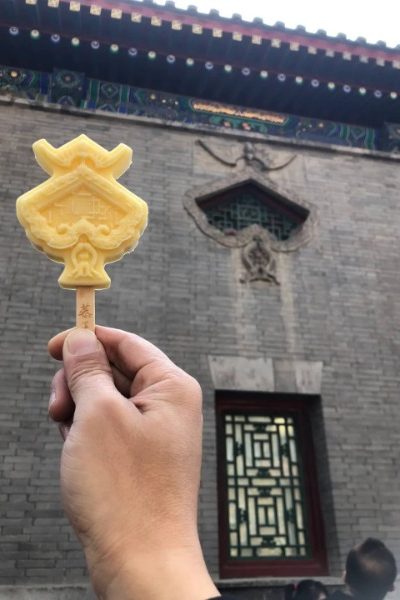
Chinese-style fridge magnets (恭王府文创冰箱贴)
The design of this fridge magnet is inspired by the iconic building of Prince Gong’s Mansion—Dajiao Tower. The price ranges from 25 to 68 yuan (approximately $3.50 to $9.50).
